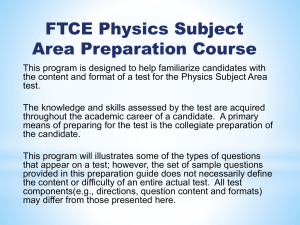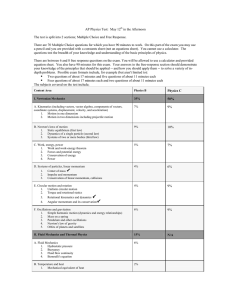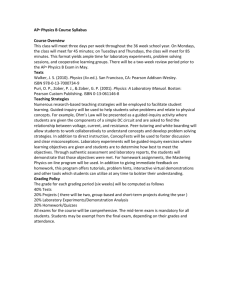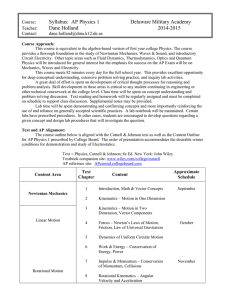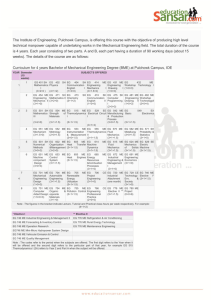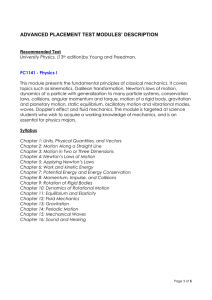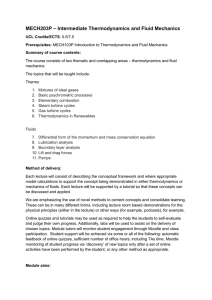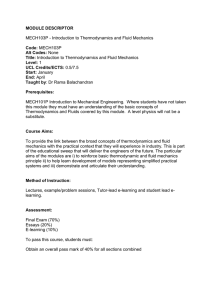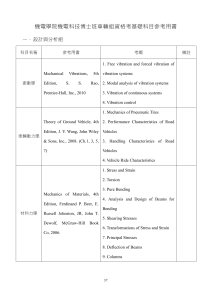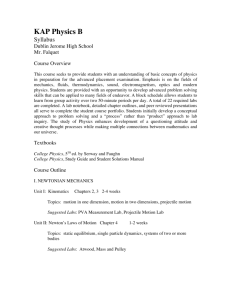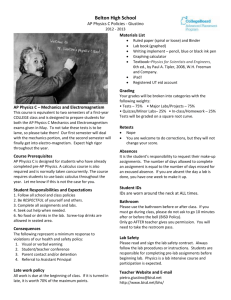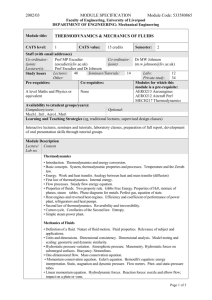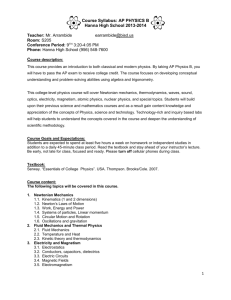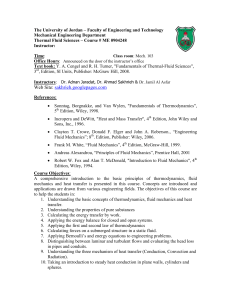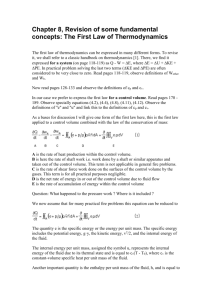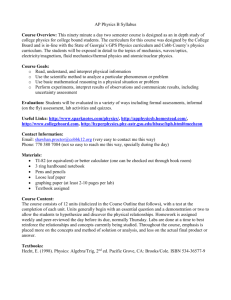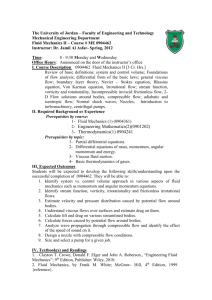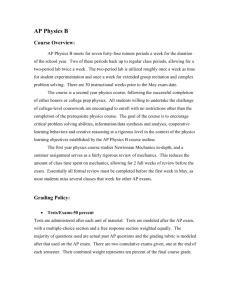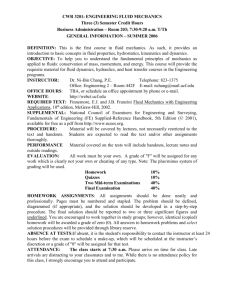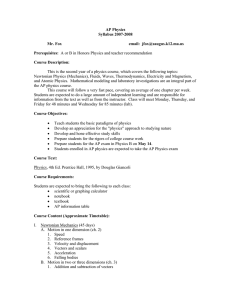AP Physics B Syllabus - Denton Independent School District
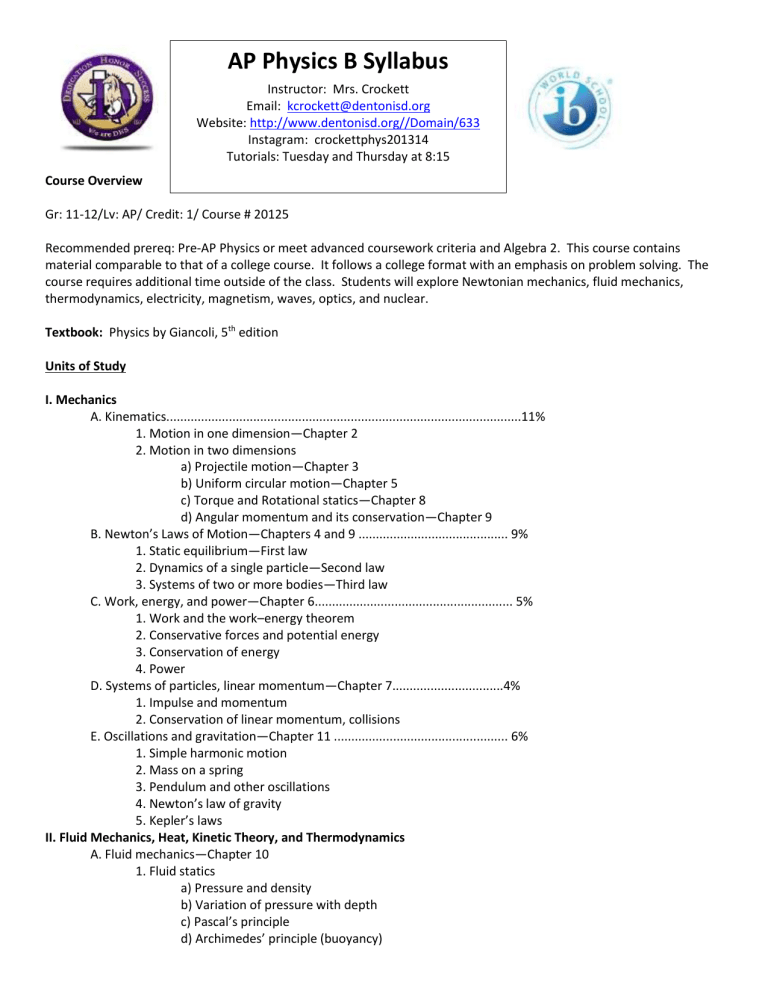
AP Physics B Syllabus
Instructor: Mrs. Crockett
Email: kcrockett@dentonisd.org
Website: http://www.dentonisd.org//Domain/633
Instagram: crockettphys201314
Tutorials: Tuesday and Thursday at 8:15
Course Overview
Gr: 11-12/Lv: AP/ Credit: 1/ Course # 20125
Recommended prereq: Pre-AP Physics or meet advanced coursework criteria and Algebra 2. This course contains material comparable to that of a college course. It follows a college format with an emphasis on problem solving. The course requires additional time outside of the class. Students will explore Newtonian mechanics, fluid mechanics, thermodynamics, electricity, magnetism, waves, optics, and nuclear.
Textbook: Physics by Giancoli, 5 th edition
Units of Study
I. Mechanics
A. Kinematics......................................................................................................11%
1. Motion in one dimension—Chapter 2
2. Motion in two dimensions a) Projectile motion—Chapter 3 b) Uniform circular motion—Chapter 5 c) Torque and Rotational statics—Chapter 8 d) Angular momentum and its conservation—Chapter 9
B. Newton’s Laws of Motion—Chapters 4 and 9 ........................................... 9%
1. Static equilibrium—First law
2. Dynamics of a single particle—Second law
3. Systems of two or more bodies—Third law
C. Work, energy, and power—Chapter 6......................................................... 5%
1. Work and the work–energy theorem
2. Conservative forces and potential energy
3. Conservation of energy
4. Power
D. Systems of particles, linear momentum—Chapter 7................................4%
1. Impulse and momentum
2. Conservation of linear momentum, collisions
E. Oscillations and gravitation—Chapter 11 .................................................. 6%
1. Simple harmonic motion
2. Mass on a spring
3. Pendulum and other oscillations
4. Newton’s law of gravity
5. Kepler’s laws
II. Fluid Mechanics, Heat, Kinetic Theory, and Thermodynamics
A. Fluid mechanics—Chapter 10
1. Fluid statics a) Pressure and density b) Variation of pressure with depth c) Pascal’s principle d) Archimedes’ principle (buoyancy)
2. Fluid dynamics a) Continuity equation b) Bernoulli’s equation c) Applications
B. Temperature and heat—Chapter 14............................................................. 3%
1. Mechanical equivalent of heat
2. Specific and latent heat
3. Heat transfer and thermal expansion
C. Kinetic theory and thermodynamics..........................................................7%
1. Ideal gases—Chapter 13 a) Kinetic model b) Ideal gas law
2. Laws of thermodynamics—Chapter 15 a) First law (pV diagrams) b) Second law (heat engines)
III. Electricity and Magnetism
A. Electrostatics—Chapter 16........................................................................... 5%
1. Charge, field, and potential
2. Coulomb’s law and point charge field and potential
B. Conductors and capacitors—Chapter 17....................................................4%
1. Electrostatics with conductors
2. Capacitors—parallel plates
C. Electric circuits...............................................................................................7%
1. Current, resistance, power—Chapter 18
2. Direct current circuits—Chapter 19
D. Magnetostatics—Chapter 20 ........................................................................ 4%
1. Forces on moving charges in magnetic fields
2. Forces on current-carrying wires in magnetic fields
3. Fields of long current-carrying wires
E. Electromagnetic induction and waves—Chapters 21 and 22..................5%
IV. Waves and Optics
A. Wave motion (sound and physical optics)................................................ 10%
1. Properties of traveling and standing waves—Chapter 11
2. Doppler effect—Chapter 12
3. Superposition
4. Interference and diffraction—Chapter 24
5. Dispersion of light and the electromagnetic spectrum—Chapters 22 and 24
B. Geometric optics—Chapter 23..................................................................... 5%
1. Reflection and refraction
2. Mirrors
3. Lenses
V. Modern Physics
A. Atomic physics and quantum effects—Chapter 27.......................10%
1. Alpha particle scattering and Rutherford model
2. Photons and the photoelectric effect
3. Bohr model
4. Wave particle duality
B. Nuclear physics —Chapter 30...............................................................5%
1. Radioactivity and half-life
2. Nuclear reactions
3. Mass and energy effects
Laboratory
Our labs are placed throughout the instructional year. An attempt is made to do them when they fit best in the curriculum. Labs begin with the presentation of a question or problem. For example, “Given some lenses, a diffraction grating, and meter sticks, how can one determine the wavelength of a laser pointer?” Students are led in a guided discussion to formulate a hypothesis to answer the question or solve the problem. They are then presented with an assortment of equipment and supplies and asked to design and carry out an experiment to test their hypothesis. They make observations, collect data, manipulate the data (if necessary) and then form conclusions. Each experiment requires a written report, kept in an organized lab notebook.
Absences
You have the number of days absent plus one day according to district policy. Keep up with the AP Physics Diary on my website.
Late Work
Late work is not accepted.
Calculators
Bring a calculator to every single class. There will be no sharing of calculators. All memory will be cleared on calculator prior to tests.
Study Group
I highly encourage you to get in a study group! Share your phone numbers and get together often.
Grade
Major Exams: 60%, Daily Grades: 15%, Lab Grades: 25%
Supplies
Package of quadruled (3-hole punched) paper, pocket folder with brads, Graphing or Scientific Calculator, Binder with paper and PLENTY of room for notes
AP Study Session dates: TBA
AP Saturday Practice Exam: April 5 th , 8-12
AP Physics B Exam date: May 12, afternoon session
The Denton Independent School District does not discriminate on the basis of sex, handicap, race, color, and or national origins in its educational programs. Admission to career programs is based on age, grade, interest, aptitude and ability. Lack of English language skills will not be a barrier to admissions and participation in any educational programs.
Please sign, detach, and return the bottom portion of this form.
“I, _______________________________, parent/guardian of ______________________________ have read and understand the syllabus for AP Physics B. “
Parent/Guardian:____________________________________ _______________________
Signature Date
Student:___________________________________________ _______________________
Signature Date

